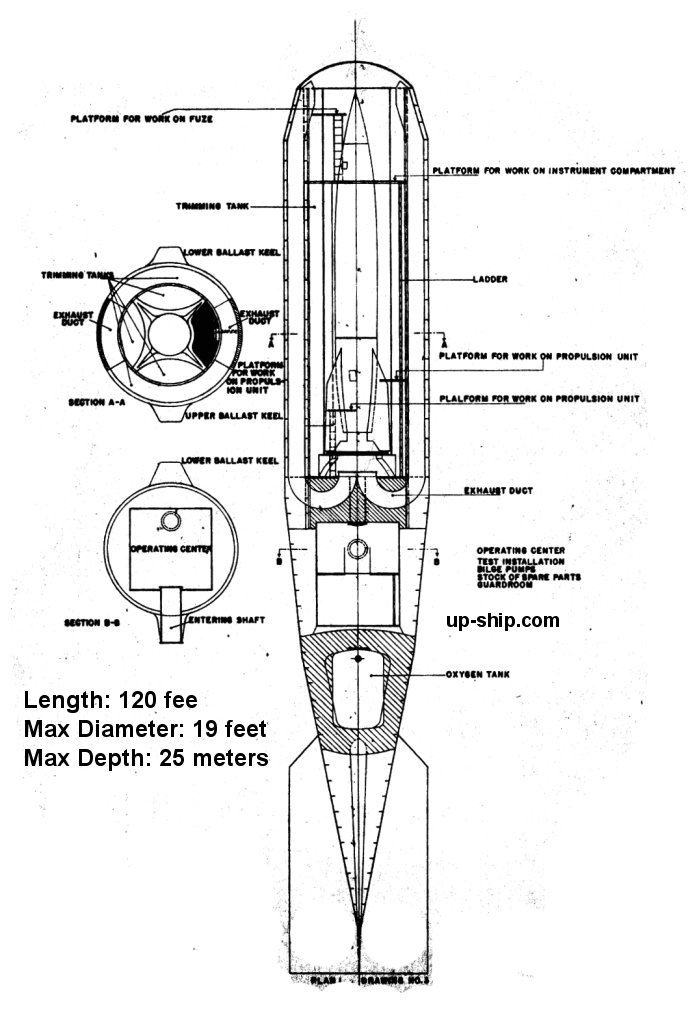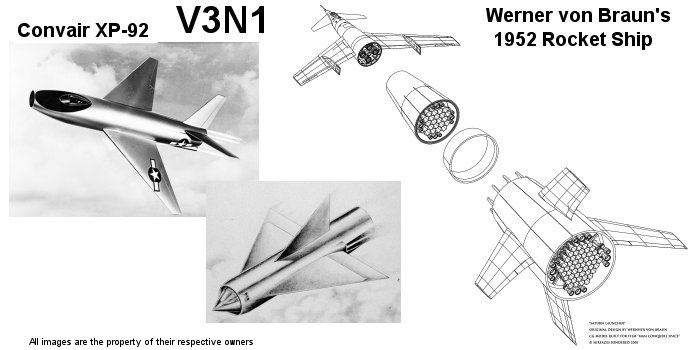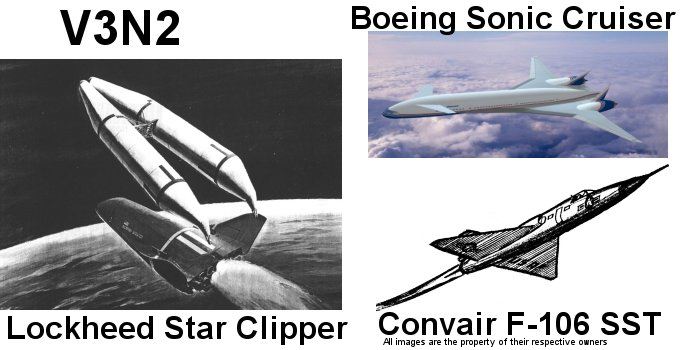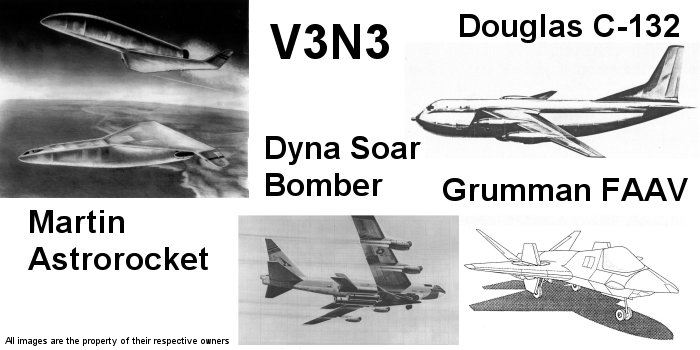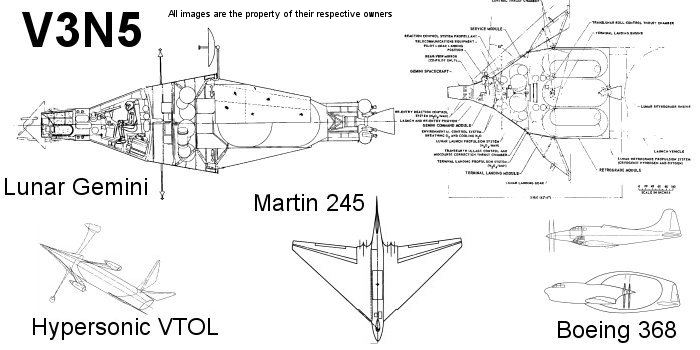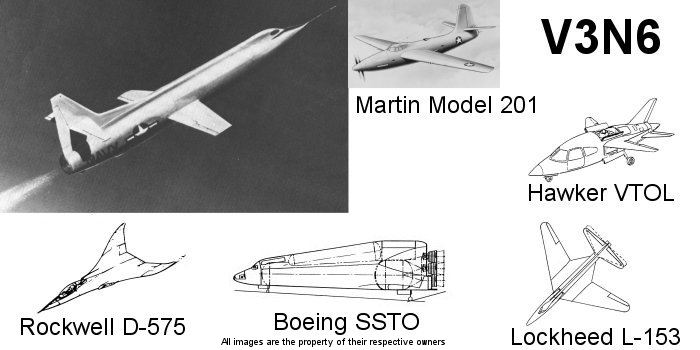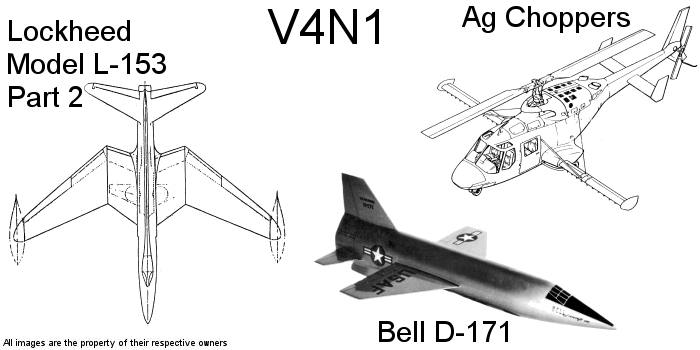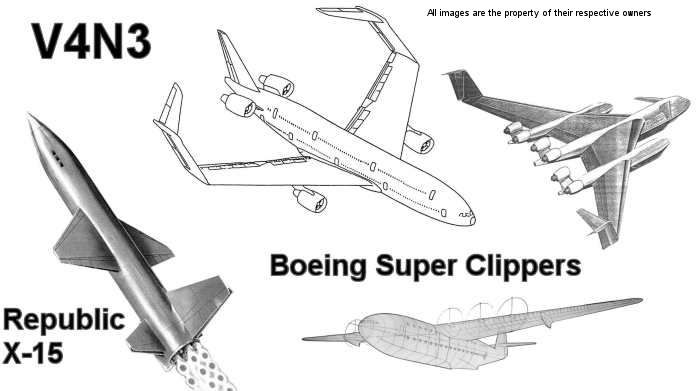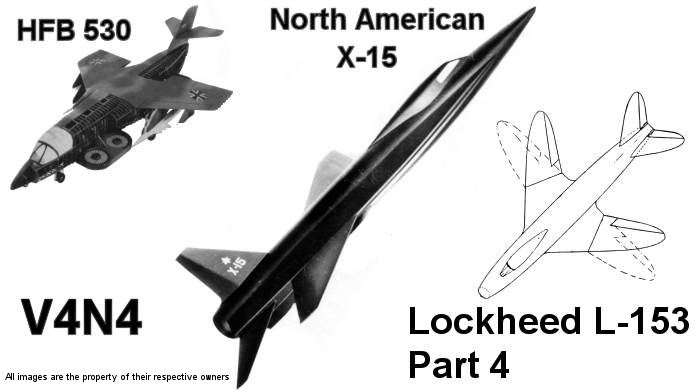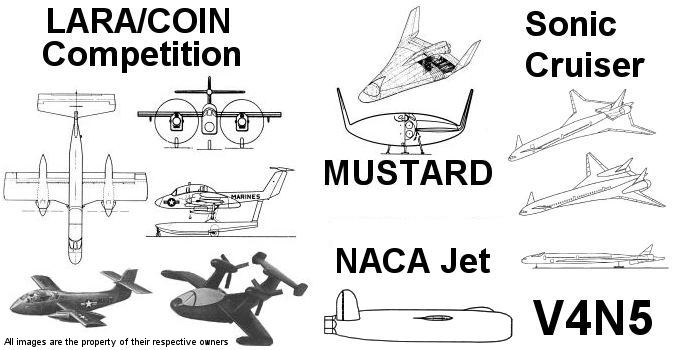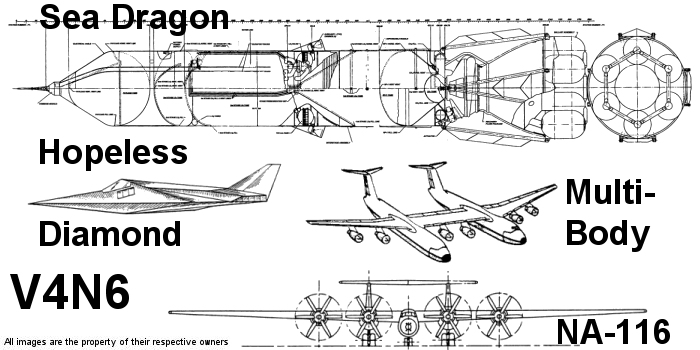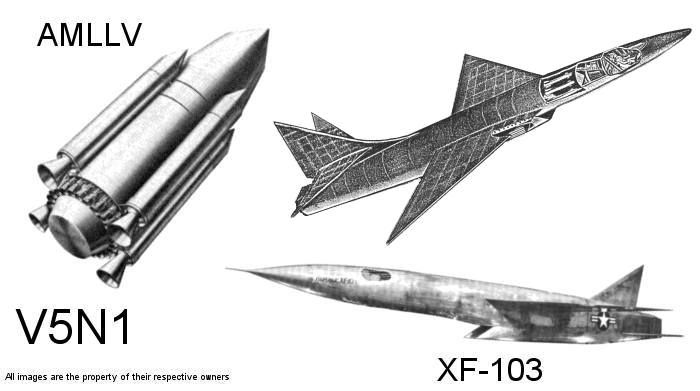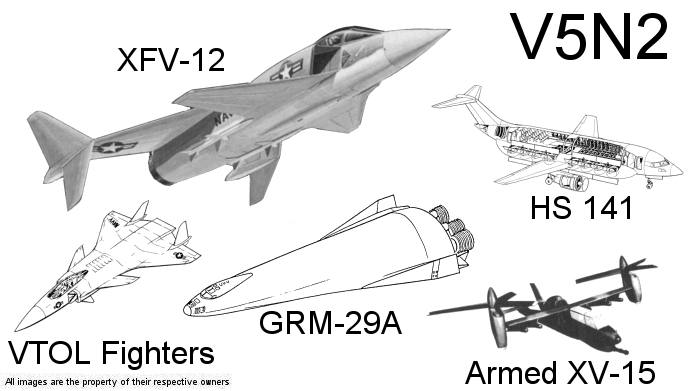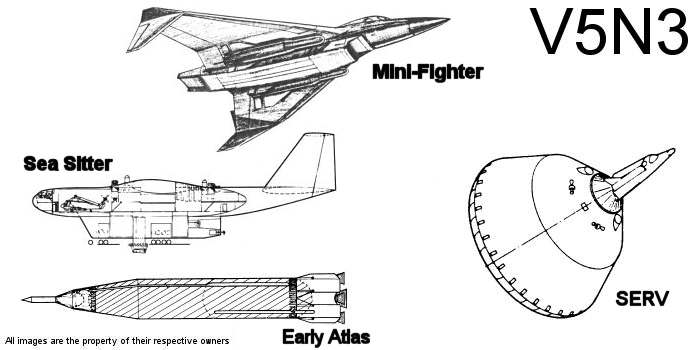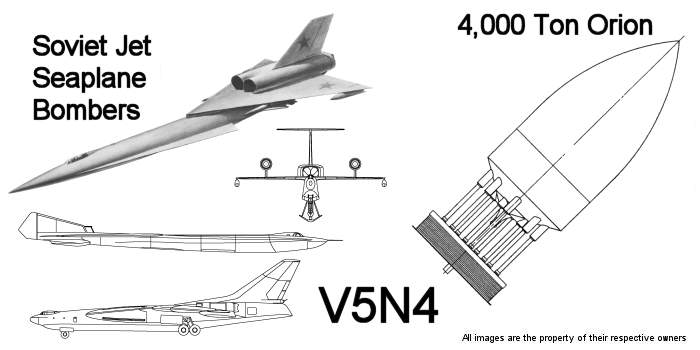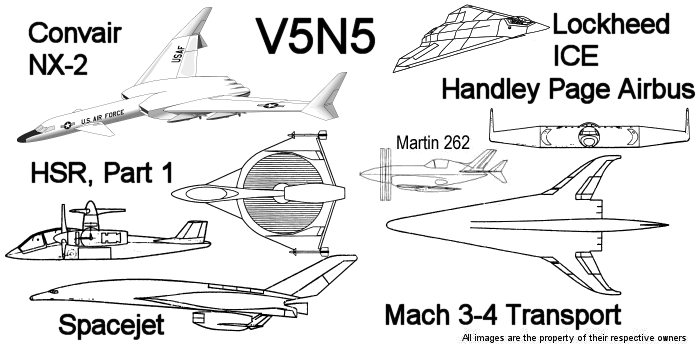Numerous sources have mentioned “Prüfstand XII” (“Test Stand 12,” a code-name) and shown the same relatively unenlightening illustrations of it over the years. The idea behind it was this: at the same time production of the V-2 rocket was ramping up in wartime Germany, the western allies were overrunning V-2 launch bases. So the Germans had a missile, but nowhere to launch it from. The idea was raised about putting V-2’s in cannisters and towing them behind U-Boats; this resulted in the first serious design effort for a sea launched ballistic missile. The submarines available to the Germans at the time were far too small to permit carrying V-2s internally, and given the alcohol fuel and cryogenic liquid oxygen oxidizer, it would have been insanely unsafe to do so. So towed cannisters would allow the subs to transport V-2s in relative safety across the ocean.
The submarines would be stripped of armament; towing the cannisters they’d be essentially sitting ducks anyway. This would permit the installation of more powerful engines. A total of five cannisters could be towed at a time. They’d be towed in the horizontal attitude; once they arrived at the launching site, 500 or so miles from the supply base (indicating that the targets for the V-2 remain in Britain), crews would be transferred aboard and then… the subs would abandon them and return home. The cannisters raised to vertical. Before launch the noses of the cannisters would project above the water; bow doors would open. The V-2s would be launched from them much like any other silo-launched missile, with ducts along the sides to the silo to carry the exhaust away from the fragile missile. The cannister would button up again and resubmerge. Four or five days later the sub would return with another five cannisters and would pick up the first five for return and refurb.
A great deal of the plan seems to have been incredibly optimistic, of course.
I recently stumbled across a post-war writeup of the concept by several of the Germans who worked on it. Included were a number of remarkable drawings and diagrams, finally showing the thing in good detail. The same basic concept was pitched to the US Navy in 1955 for use with Jupiter IRBMs, with no success.
I’ve numerous more diagrams of this. I think it’d make a good APR article… and it’d make a spiffy cutaway display model. If anyone would be interested in contracting me to build them such a model… just let me know.
